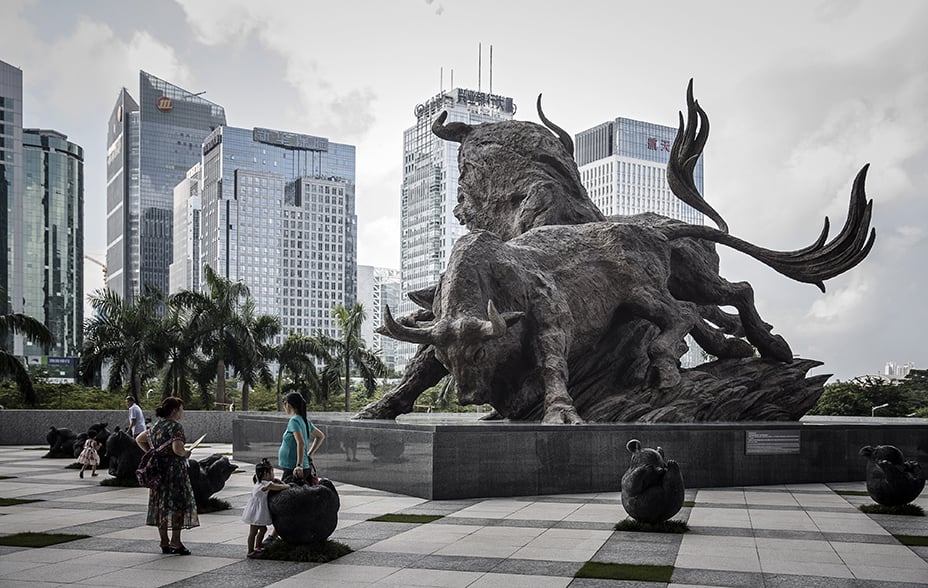
The value of shares in the fund and any income from them, can fall as well as rise and investors may not get back the amount invested.
We sometimes think of income investing as being akin to searching for thoroughbred racehorses to add to our stable.
Just as investors in the equestrian world seek out fast-legged mares and stallions with many years of winning races ahead of them, so too do we look for cash-generative companies with significant growth opportunities, trustworthy management and sustainable practices that should mean they can pay a steadily rising dividend to shareholders over the long term.
In making our selection, we limit the field to companies that have a market capitalisation of more than £1bn. In principle we are happy to own firms that don’t yet pay dividends if we believe they will start doing so soon, but we think the ‘pays a dividend’ criterion is a helpful starting point for staking out our hunting ground.
On that basis, there are more than 5,300 companies globally to choose from. And it may surprise you that the biggest single opportunity set isn’t the US or Europe but China, where 1,200 companies qualify.
Chinese stock markets
Until a few years ago, these companies would have been beyond limits for most western investors. Like others, we could only invest in the subset of Chinese companies that chose to list in Hong Kong or New York.
However, over recent years the Chinese government has encouraged foreign investment into its domestic market, notably through the Connect programme offered through the Hong Kong Stock Exchange. We are now able to invest directly in companies listed on mainland exchanges. And in July we did so for the first time, purchasing Midea, a Shenzhen-traded manufacturer of air conditioners and other appliances.
At first glance the timing may seem odd. Some investors have become wary of China after a series of much-discussed developments including regulatory moves against consumer-facing internet companies, high-profile founders stepping back from board-level roles, and property developer Evergrande’s financial struggles casting a shadow over the wider economy. The Hang Seng Index, a barometer of confidence in the Chinese economy, has notably underperformed other global markets in recent months.
But I’d like to suggest three reasons why the long-term opportunities for dividend investors in the Chinese market are exciting.
Dynamism, distinctiveness and dividends
The first is the dynamism of many Chinese companies, a good many of which are still run by founders or CEOs hand-picked by the founder. True, many of the 1,200 companies we highlighted above are state-owned enterprises with capital-intensive business models and poor governance – we won’t bother considering saddling our portfolio with those.
But there are many others that have entrepreneurial management teams and could be a great fit for our strategy. In a 60-stock portfolio, we only need to find a handful of the most promising ones.
The second is the rapid expansion of China’s middle class, with its own distinct needs and wishes. The speed with which Chinese consumers have adopted ecommerce, food delivery and some premium brands has caught some western observers by surprise. This presents huge opportunities for the most dynamic companies. This is a market where entrepreneurs can build businesses with billions of dollars in sales faster than in almost any other part of the world. And increasingly, the successful ones are looking to expand overseas to pursue further growth.

The third is the emerging attitude towards dividends. Many international investors don’t appreciate that the listing rules on the Shanghai and Shenzhen stock exchanges set minimum dividend payout ratios for companies, based on:
- how profitable they are
- how mature their businesses are
- the extent to which they need to invest in fixed assets such as factories, property and equipment to drive further growth
The obligation varies widely. The most immature companies may only have to pay 20 per cent of their net income to shareholders, but the most mature can be required to distribute an 80 per cent share.
Invest wisely or return
The explanation for this is clear: the Chinese government doesn’t want the most mature businesses to hoard cash and reinvest it at poor returns. It would rather the money was returned to shareholders, including public and private pension funds, which are big investors in the market.
And many founders take a similar view. For example, Ding Shizhong, the chief executive of our Hong Kong-listed holding ANTA Sports, has prioritised both growth and dividends since its 2007 listing.
This will matter more as time goes on, as China’s government also appears to be keen that Chinese companies listed overseas ‘come home’ and list on the domestic stock exchanges. We expect that companies like Alibaba, Tencent and NetEase, which originally listed in New York and then set up dual listings in Hong Kong, are likely to pursue listings in China too, with dividends following.
Investing in China does involve some special considerations, such as whether a company’s business model falls broadly in line with the government’s policies. In the main, our holdings have not been directly affected, because they do uncontroversial things like sell sportswear or rice crackers.
NetEase, the video game company, is the only portfolio member to have been impacted by China’s recent regulatory crackdown. The government has demanded that games companies limit the amount of time that children spend playing video games, and there have been suggestions that the pace of approval of new titles might slow for a period. But NetEase has responded positively to these developments and we are confident that it will make any necessary adjustments.
While our fund is geographically diverse, we don’t make top-down country allocations, but rather believe in following opportunities when and where they arise.
In that context, we’ll continue to look to China as a place to harness additional ‘racehorse’ holdings that could potentially offer galloping growth in both profits and dividends.
or for more detail view the Global Income Growth Fund Factsheet.
Important information and risk factors
The views expressed in this article are those of Toby Ross and should not be considered as advice or a recommendation to buy, sell or hold a particular investment. They reflect personal opinion and should not be taken as statements of fact nor should any reliance be placed on them when making investment decisions.
This communication was produced and approved in January 2022 and has not been updated subsequently. It represents views held at the time of writing and may not reflect current thinking.
Any stock examples and images used in this article are not intended to represent recommendations to buy or sell, neither is it implied that they will prove profitable in the future. It is not known whether they will feature in any future portfolio produced by us. Any individual examples will represent only a small part of the overall portfolio and are inserted purely to help illustrate our investment style.
The Fund’s share price can be volatile due to movements in the prices of the underlying holdings and the basis on which the Fund is priced. Investments with exposure to overseas securities can be affected by changing stock market conditions and currency exchange rates.
All information is sourced from Baillie Gifford & Co and is current unless otherwise stated. The images used in this article are for illustrative purposes only.
This is a marketing communication and should not be considered as advice or a recommendation to buy, sell or hold a particular investment. No reliance should be placed on these views when making investment decisions. This article does not constitute, and is not subject to the protections afforded to, independent research. Baillie Gifford and its staff may have dealt in the investments concerned.
Baillie Gifford & Co and Baillie Gifford & Co Limited are authorised and regulated by the Financial Conduct Authority (FCA). Baillie Gifford & Co Limited is an Authorised Corporate Director of OEICs.
Past performance is not a guide to future returns.





